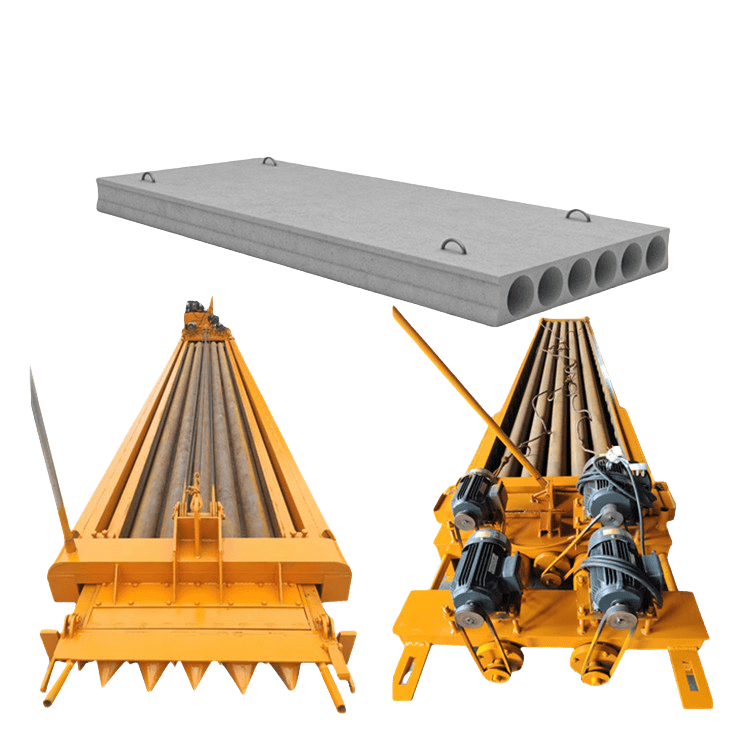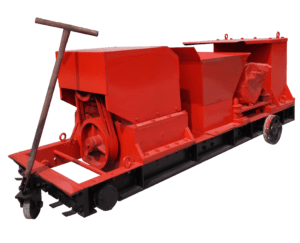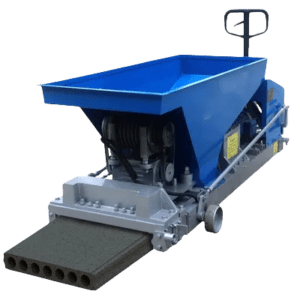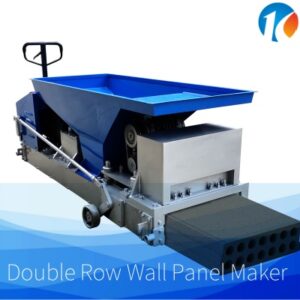How concrete hollow core slab machines Work: Principles, Types, and Applications
As the global construction industry accelerates toward industrialized building methods, precast concrete slab machines and concrete hollow core slab machines have become essential equipment in modern precast production lines. These machines are widely used in residential, commercial, and industrial projects to manufacture durable, lightweight, and efficient concrete floor systems.
In this article, we will explore the working principle, key technologies, and machine types involved in precast slab production.
I. What Is a Precast Concrete Slab Machine?
A precast concrete slab machine is a specialized piece of equipment used to produce large-scale concrete floor panels in a factory setting. By enabling controlled production, these machines ensure high precision, consistent quality, and rapid output, which significantly reduces on-site labor and construction time.
Precast slabs are typically used in:
- Multi-story buildings
- Parking structures
- Schools and hospitals
- Industrial warehouses
II. Working Principle of concrete hollow core slab machine
The operation of a concrete hollow core slab machine involves multiple automated stages that ensure strength, precision, and efficiency:
1. Material Preparation
Concrete ingredients—including cement, sand, gravel, water, and additives—are batched and mixed to produce a consistent, high-performance concrete mixture. Quality control at this stage is essential for the strength and durability of the final product.
2. Mold Setup and Rebar Arrangement
Production can take place using horizontal or vertical molds, depending on the slab type.
- Core mold placement: For concrete hollow core slab machines, hollow cores are formed using core molds or inflatable tubes to reduce slab weight and improve insulation.
- Rebar positioning: Steel mesh or steel bars are pre-arranged in the mold to enhance the tensile and bending strength of the slab.
3. Concrete Filling and Forming
The prepared concrete is delivered into the mold using automated feeding systems. Different forming methods may be used depending on the type of machine:
- Vibration Compaction: High-frequency vibrators eliminate air pockets and compact the concrete to increase density.
- Extrusion Forming: Common in precast concrete hollow core slab machines, where concrete is pressed through an extrusion head to form long slabs with internal voids.
- Rolling Molding: Rollers compress the concrete evenly, providing rapid shaping and surface finishing.
4. Prestressing Technology (if applicable)
For prestressed precast concrete slabs, tension is applied to steel strands before concrete placement. After the concrete cures, the tensioned steel improves flexural strength, making it ideal for long-span slabs in heavy-load areas such as bridges and parking decks.
5. Curing and Demolding
- Curing: The formed slabs are placed in a controlled curing chamber, where steam or natural curing accelerates concrete hardening. Curing typically takes 12 to 24 hours.
- Demolding: Once the slab reaches the required strength, automated systems safely demold the panels without damaging the edges or surface.
6. Post-Processing and Transport
- Cutting: Some machines include cutting equipment to produce slabs of specific lengths.
- Surface Treatment: The top surface may be polished, patched, or sprayed with a waterproofing agent.
- Stacking and Transport: Finished slabs are stacked and moved to the construction site, ready for installation.
III. Types of Precast Concrete Slab Machines
Depending on project requirements, manufacturers can choose from various slab production machines:
1. Concrete Hollow Core Slab Machine
This machine forms precast slabs with hollow cores, reducing weight while maintaining strength. The cores also improve sound insulation and can be used for electrical or mechanical routing.
2. Standard Precast Concrete Slab Machine
Suitable for solid or prestressed floor slabs with steel reinforcement. Ideal for projects requiring strong load-bearing capacity and durability.
3. Composite Floor Slab Machine
Used for producing multi-layer slabs, including insulation cores or embedded heating elements. These are popular in cold climates or energy-efficient buildings.
IV. Key Technologies Driving Performance
- Mechanized Forming: Enhances production efficiency and consistency.
- Vibration and Extrusion Techniques: Ensure compact, defect-free concrete.
- Reinforcement Integration: Improves the structural reliability of floor slabs.
- Intelligent Automation: PLC and sensor-based systems allow precise control and reduce labor dependency.
V. Conclusion: Why Choose Precast Slab Machines?
Whether you’re constructing residential apartments or large commercial buildings, precast concrete slab machines and concrete hollow core slab machines provide:
- Faster production and construction cycles
- Consistent quality and dimensional precision
- Reduced labor and material waste
- Superior performance in strength, insulation, and durability
Investing in a reliable precast slab machine means long-term cost savings and higher construction productivity. Manufacturers like Henan Kelai Industrial Co., Ltd. offer customizable, automated production lines to meet global construction demands.
🔧 Ready to upgrade your concrete slab production?
Explore Kelai Machinery’s range of precast slab machines designed for modern construction.
🌐 Visit: www.kelaiii.com
📲 WhatsApp: +86 17788171295
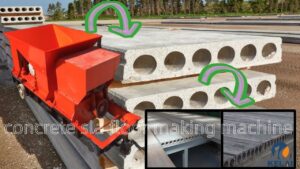
Pushing Type Precast Concrete Slab Machine for Sale | Hollow Core & Solid Slab Equipment – Kelai
